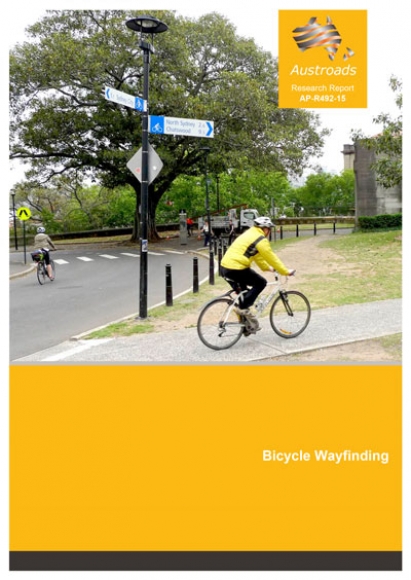Friday, 25 September 2015
Directional and wayfinding signs are critical elements of any transport system.

Wayfinding for bicycle riders helps people find their way around the network and make full use of cycle infrastructure.
Signs can indicate the legal status of a facility (bike lane signs, shared path signs), regulate safe use (Stop, Give Way and parking signs), warn of potential hazards (steep descent, slippery when wet, road ahead signs), and guide cyclists to their destinations (cycle route directional and wayfinding signs).
In the past directional and wayfinding sign projects have been carried out on a per-route basis. Bicycle routes can be located on-road in lanes or mixed traffic streets, off-road on bicycle paths or shared paths, or on a mixture of the two. The signing of complex routes is particularly important to facilitate connections between on- and off-road cycle facilities improving overall route cohesion.
As road authorities and local councils develop their bicycle facilities into region-wide networks, signs become an essential element in facilitating trips across a whole city, town or urban region. Signs for cycling networks can also inform bicycle riders of routes which are more direct or less heavily trafficked. Cycling network signs can help raise community awareness of the many route possibilities for bicycle travel other than single routes or the general street system.
In 2014 Austroads commissioned a project to provide guidance to practitioners on the design of bicycle wayfinding schemes.
This project was designed to improve the guidance required to achieve a consistent approach to bicycle wayfinding schemes in Australia. This guidance would be considered in the future updates to the relevant Austroads Guides including the Guide to Traffic Management.
The project brief required the consultants to investigate all aspects of signposting, road marking and other wayfinding aids which could be used in a range of situations including urban bicycle networks and tourism routes and trails.
A key aim of the project is to provide guidance on facilitating an improved level of service by enabling bicycle users to better navigate bicycle networks. Improvement of bicycle wayfinding is considered important for practitioners as it will assist them to deliver environmentally sustainable transport objectives.
The project is documented in two reports released this week:
- Bicycle Wayfinding which applies the key findings and recommendations of the literature review and recommends changes to the current standards and guidelines for cycling directional signs
- Bicycle Wayfinding: Literature Review which reviews the current guidance internationally and for Australia and New Zealand.
